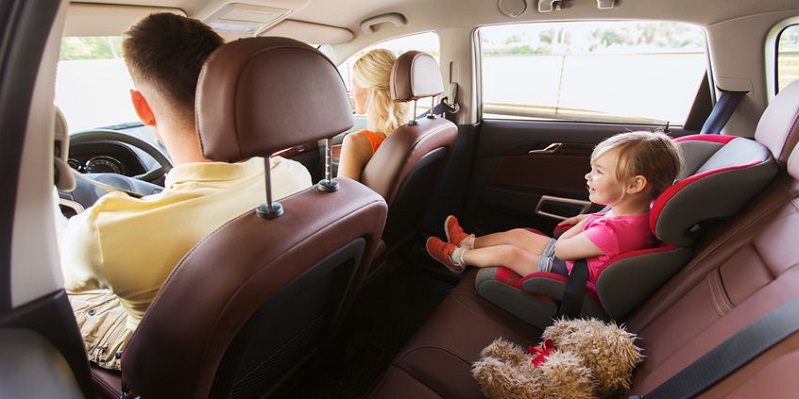More than 90 percent of child car seats inspected in Colorado are not installed properly. Play it safe and have your car seat checked by a professional.
Busy parents have a lot on their minds, but their first priority should always be the safety of their children, particularly when preparing for the possibility of an auto accident.
Here are three things to consider as you head out on the road with your young child:
Make Sure You’re Using the Proper Car Seat
There is a myriad of car seats on the market today, geared to fit young passengers of varying ages, heights, and weights. Generally:
- Never buy a used car seat, because there is no way to tell whether it has been through an accident or meets current safety standards. Car seats have expiration dates, typically six years after manufacture.
- A newborn baby should be placed in a rear-facing car seat, and not move up to a forward-facing one until at least two years of age, or, better still, until they reach the maximum height or weight stated by the manufacturer.
- Children who have outgrown the weight limit for their car seat are ready for a booster seat.
- Booster seats can be used until a child is around the age of 12, or when he can sit on the seat with his feet flat on the floor.
Place Your Car Seat in the Right Spot in the Vehicle
Regardless of what type of vehicle or car seat you may have, there are two things you should know when installing an infant car seat:
- The middle spot in the back seat (away from passenger-side air bags) is considered to be the safest place for a baby. If the car seat doesn’t fit in the middle spot, put it on either side of the back seat, or in the second row of an SUV. You should never install a car seat on the front seat of a vehicle.
- Keep a child in the rear-facing position as long as possible, because facing backward provides the best protection in a collision.
Ensure That Your Car Seat is Correctly Installed
Improper use of child restraint systems reduces their potential effectiveness about 46 percent of the time — 59 percent for car seats and 20 percent for booster seats — according to the Centers for Disease Control and Prevention (CDC).
Some typical car seat installation mistakes include:
- Installing the car seat too loosely. Make sure you’ve secured the car seat base tightly. The seat should not wiggle back and forth, pivot, slide up or down, or tip. If it moves more than one inch forward or to either side, it needs to be tightened.
- Routing the vehicle’s seatbelts improperly.
- Failing to place seatbelts in the lock mode.
- Using both the lower anchors of the LATCH system as well as the seatbelt.
- Connecting the lower anchors and tethers of the LATCH system to the wrong places in the vehicle.
- Not using the tether at all.
- Not putting enough weight on the car seat during installation.
According to the American Academy of Pediatrics, approximately 84 percent of all rear-facing car seats are installed improperly or misused, while the Colorado Department of Transportation (CDOT) reports local instances are greater than 90 percent. It’s always a good idea to get a second opinion from a professional if you’re unsure whether you’ve done it correctly.
Because installing a car seat properly can be challenging, Safe Kids Worldwide connects caregivers and parents of young children with child passenger safety (CPS) technicians in their community who conduct safety checks and can teach them how to install and use a car seat properly. You can also search by county on the CDOT’s website to find a local Colorado inspection station.

